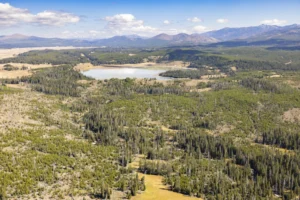State Applauds Success of First ‘Ashanti Alert’ In Finding Missing Adult
Program’s next step is convincing the federal government to greenlight posting notifications on highway signs
- Published In: Other News & Features
- Last Updated: Jul 18, 2023

The national Ashanti Alert was enacted into federal law in 2018 to help locate individuals over 17 who are thought to be endangered or abducted, as well as missing adults with special needs or circumstances. (Courtesy image from the U.S. Department of Justice)
By Jennifer Kocher
Special to the Wyoming Truth
Nearly six months after Gov. Mark Gordon signed the Ashanti Alert into law, the first alert helped locate a 78-year-old man with Alzheimer’s who went missing from his home on July 12. Within 20 minutes after the Ashanti alert sounded on public alert systems, the Lander police had received 72 tips from local residents, enabling the man to be found within a half hour of being reported missing.
“There’s no doubt it’s effective,” said Chris McGuire, communications supervisor at the Wyoming Highway Patrol and statewide coordinator of the America’s Missing Broadcast Emergency Response (AMBER) alerts.
The Ashanti Alert became federal law in 2018; it is the adult version of the AMBER alert that’s used for children 17 and under who are believed to have been abducted or to be in imminent danger. The Ashanti Alert, named after Ashanti Billie, a 19-year-old Virginia woman who was abducted and killed in 2017, assists with search and recovery efforts for individuals over age 17, as well as at-risk adults with developmental disabilities, dementia or other cognitive impairments or other adults who are endangered or abducted.
Both national alerts are coordinated by the U.S. Department of Justice. The program, including the posting of alerts on overhead highway signs, is funded by the federal government.
Currently, AMBER is the only alert greenlighted by the government to appear on highway signs in any state. And despite attempts by McGuire to secure approval to post Ashanti Alerts on overhead signs in Wyoming, thus far she has been met with opposition despite support from Gordon’s office.
“That’s what’s frustrating,” McGuire said. “To be 100% successful, especially in a state like Wyoming, we need to also have the alert on highway signs.”
Both AMBER and Ashanti Alerts are issued to law enforcement and through integrated public alert warning systems (IPAWS) that were created by the Federal Emergency Management Agency (FEMA) in 2006. These alerts operate over a network of multiple entities, including state, federal and tribal authorities; they also go out to radio and television stations and as CodeRED notifications.
In a state like Wyoming that has unreliable radio and cell signals, overhead signs are key to spreading the word in cases where residents are in imminent danger and time is of the essence, McGuire said.
However, if the highway patrol ignores the bans and posts Ashanti Alerts on overhead signs, the state is at risk of losing federal highway dollars. McGuire isn’t sure how much funding is involved, only that it is significant enough that the department refuses to take the risk.
Right now, the state is at a standstill pending a September meeting with the coordinator of the national Ashanti Alert pilot project, where McGuire said she hopes some of these questions will be answered.
For now, McGuire is focused on continuing statewide training and advancing efforts to spread the word of the Ashanti Alert to all entities and citizens. The next two trainings will take place in August on the Wind River Indian Reservation.
“We’re going to continue working on the roadblocks that we’ve had,” she said. “I’m passionate about this.”













